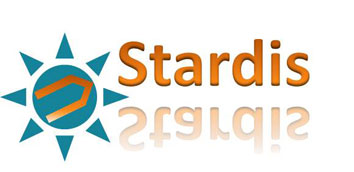The Undulate Ray Project
Martin & Sheilah Openshaw
Paradise, as sold by travel agents, is a tropical island with white sand and palm trees swaying in the gentle breeze. For an undulate ray, it seems that the temperate waters of the English Channel are far more appealing.
Since 2009 undulate rays have been classified on the ICUN Red List[i] as ‘Endangered’, yet they are locally common. Their range is from the Gulf of Guinea to the English Channel and Southern Ireland. Catches for both commercial and recreational fishing of the undulate ray had declined leading to an EU ban on landing undulate rays, but today the fishermen in the English Channel are telling a very different tale, one of undulate rays being in abundance and of disbelief that the species could be endangered.
At the Porcupine Conference in 2015 we told of a ray ‘Hot Spot’ along Kimmeridge Ledges, Dorset[ii], and explained how undulate rays could be individually recognised from the pattern on the dorsal side. A further 2 season’s work and the addition of computerised recognition software has provided some interesting data; the majority of rays we see are undulates, and approximately one third of them are fish returning to the site, sometimes not having been seen for two or three years.
The intriguing question and the basis for the current project, is “where do ‘our’ fish go when not on the site?” The Undulate Ray Project aims to combine the photo recognition with citizen science to track the location and possible movements of undulate rays along the South Coast. The location of nursery sites is of particular interest therefore as part of the Outreach programme, we are promoting the Great Eggcase Hunt, a project already running by the Shark Trust. The percentage of eggcases reported underwater is very low and therefore we are encouraging divers to keep a look-out for them.
The Undulate Ray Project is aimed at divers, commercial fishermen and anglers and we are asking them to send us photographs of undulate rays seen along the South Coast from Devon through Dorset, Hampshire and the Isle of Wight. It was launched in January at the Dorset Seasearch winter gathering and we were amazed and pleased to get 2476 visitors to the website within the first 3 days; writing in June we have now had over 10,000 visitors to the website. We have spoken at a number of gatherings of divers and anglers; one dive club has (after checking with PADI) used our presentation as part of their ‘Shark Aware’ qualification; and Wight Dolphins BSAC club have taken over the analysis of the undulate rays around the Isle of Wight. We have over 129 members of our Facebook page and are very pleased with the number of organisations who have given their support (check the links page of the website).
A steady stream of photographs are coming in and we have had our first match, it’s not a ray we have seen on the original site but it is still early days. We acknowledge every contribution and each ray is checked against the other fish in the project. To get the best chance of matching photographs, and to evaluate the performance of the software with a large database of photographs, we check each fish twice, once within the area it was seen and again in the entire range of the project. The computer recognition software identifies potential matching photographs and the final analysis is done manually by both of us.
When a match occurs, we contact the original contributors, not only to tell them ‘their’ fish has turned up again, but to ask them to choose a name. Any fish seen on more than one day, continues to get a name, in alphabetical order and we’re currently starting our second run through the alphabet with “Alex” and “Blanc” both named since the Porcupine conference.
We know the process works on our localised site and the data from there provides the basis for The Undulate Ray Project. From 208 sightings of rays on the site, the clear majority (170) are undulates, and approximately one third of these are fish identified as returning to the site, sometimes not having been seen for two or three years.
Of the 170 recorded sightings with undulates, we have photographs that can been used to identify the individual fish for 143 of those occasions; taking repeat sightings into account this represents 96 individual undulate rays. 24 of these have been seen on more than one day and therefore we have given them a name, 2 spotted rays also have names having been seen twice. Based on these figures we have a 24% return rate to the site.
Repeat sightings of the same fish occur days, months or years apart. We do not see the same fish many times, “Billy” remains our most frequently seen individual, having been photographed only 5 times. The scarcity of single individuals being seen many times suggests the rays may visit the area on a periodic basis. A significant percentage of the overall rays (approximately 1 in 4) are seen on repeat occasions, often after 2 or three years. This suggests the overall population visiting the site on a regular basis is not huge, perhaps only a few hundred fish. These observations concur with work done by the Marine Research Laboratory and 'Raias Arrábida' [iii] in Portugal (both presented at the European Elasmobranch Conference and pending publication) indicate that the populations do move around.
We are only 5 months into the current Undulate Ray Project and are pleased with the response from Divers and anglers. We look forward to publishing our results in due course, but until then we ask Porcupine members to visit our website join our Facebook group (The Undulate Ray Project) and tell as many people as possible because who knows who will send the next match.
[i] The IUCN Red List of Threatened Species. Version 2014.3. <http://www.iucnredlist.org> .
[ii] Openshaw, Martin and Sheilah 2015. Recognizing Undulate Rays, Porcupine Bulletin, Autumn 2015
[iii] Sousa et al., in prep. Assessing the effectiveness of a small MPA for the recovery of an endangered elasmobranch: the undulate ray (Raja undulata)'



